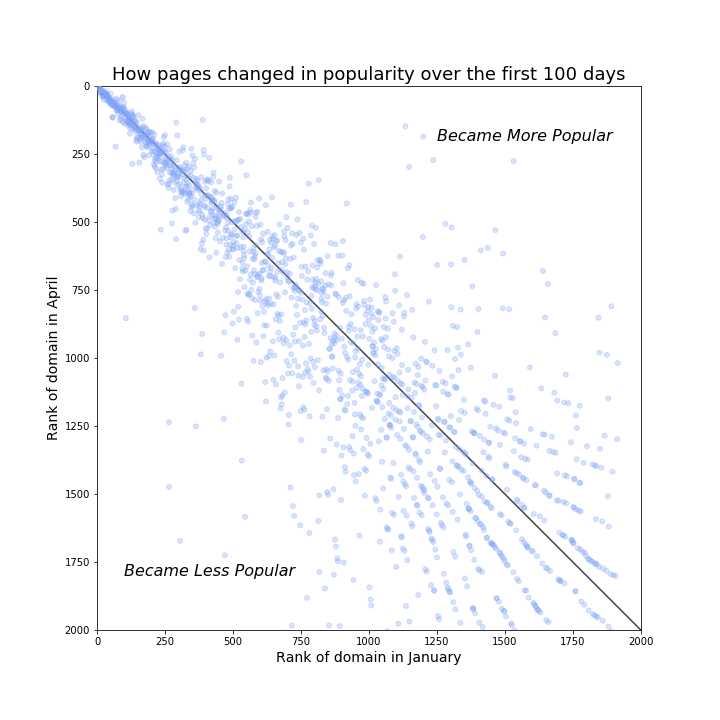Whitehouse.gov is much less popular after 100 days of Trump
In 2017, the primary way most citizens interact with their government is through the internet. Before they go to an office in person, before they write a letter or make a call, they visit a website. As such, the traffic across those webpages present a useful window into the way people interact with their government, and into the rhythms of American life.
To understand how traffic preferences have changed during the first 100 days of Donald Trump’s presidency, I pulled data on a month’s worth of traffic among all US government websites from analytics.usa.gov. The website compiles statistics for the prior 30 days (or 5 minutes, if you’re interested in that). To compare the way activities have changed, I compared data of the prior 30 days that included Trump’s inauguration (the most readily-available data was for Jan. 29th, nine days after his inauguration) and from his 100th day in office, April 29th.
This chart demonstrates the way views of government domains were different in April from the way they were in January. It uses a “ranking” of the number of visits a domain received.

Beyond the number of visits (which determines ranking), I considered the number of pageviews a domain received over that time, as well as the number of unique users. For some pages, such as USAjobs.gov, the number of pageviews relatively high, so there is some difference in that analysis. I’ve summarized some of the bigger differences in this analysis.
Big Gainers
- IRS websites are big gainers, since the first 100 days always* coincides with Tax Day in America. The main IRS web domain saw the greatest increase in total visits among all executive branch domains
- NASA’s images domain saw the biggest growth in visitors over January, with more than 100x the visitors in the month of April as they had in January. During that time the probe Cassini crossed through the rings of Saturn and sent back stunning photos.
- The Securities and Exchange Commission includes databases that house information on publicly-traded company quarterly filings. Since the period included the end of the first fiscal quarter for many companies, it may be unsurprising that visits to the website increased 83% between the two periods.
- Visits to the White House’s anti-cyberbullying initiative jumped by 184% between January and April.
- The 100-day marker is right before many deadlines for students applying to college to receive student aid packages, which may be why pageviews of the National Postsecondary Student Aid Survey domain increased by a greater percentage than any other government domain over the period.
Big Losah’s
- The White House’s main website, whitehouse.gov plummeted in popularity between January and April. It tumbled from being the 9th most popular federal web domain to the 22nd, with 13 million fewer visitors over the 30-day period. Corresponding visits to search.whitehouse.gov fell similarly.
- Similarly, petitions to the White House fell precipitously, losing 13 rank positions and 3 million fewer visits in April than they did in January.
- The state department’s web domain that details a foreign traveler’s passport status saw a drop of more than 2 million visitors between the two months.
- The Office of Personnel Management - which DC-based folks know as the people who tell you whether the government is shut down due to snow - became much less popular in April than it was in January.
Top Government Websites
- People always want their packages and they want to know the weather, so the domains for the post office and the weather forecast are consistently some of the top website. These domains are also common API targets for mobile apps that involve weather and delivery.
- USAjobs.gov is the main federal government portal for job applicants, and is one of the top ten websites in both months.
- The Centers for Disease Control was popular in both January and April, as was the Social Security Administration.
To summarize, Americans are busy living their lives, but they are quantifiably are less interested in interacting with the public-facing part of the executive than they were at the beginning of the Trump Era.
See the full analysis of this question on Github.